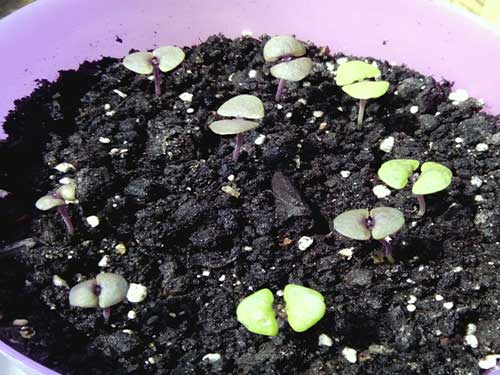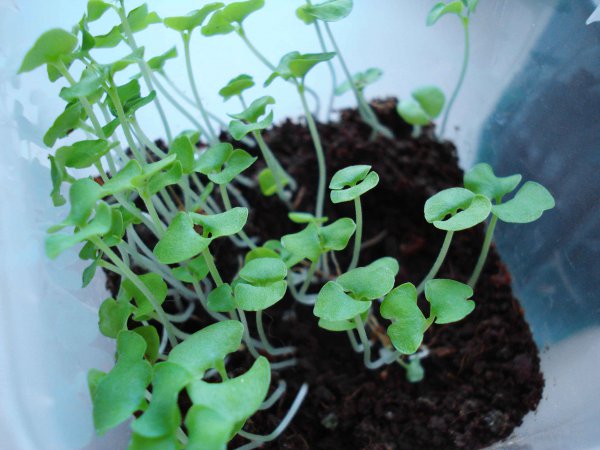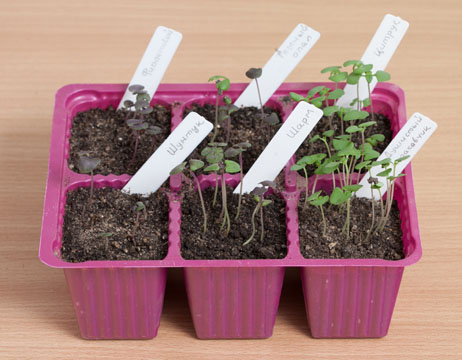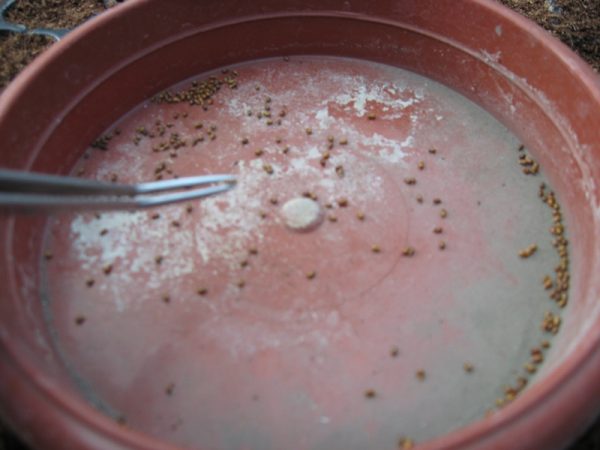Growing basil from seeds and caring for seedlings
Content
What is needed
In order to grow good greens at home, you will have to work a little, since the agricultural technology of basil is demanding on the soil and temperature regime. Basil is an erect shrub 20 to 60 cm long with varied foliage. Depending on the variety, basil leaves are: bright green; dark green; purple.
In addition to different colors, basil leaves can be flat-edged or carved or even corrugated. In order to get a good harvest of basil, it is important to have: the correct soil mixture, a good sunny place for planting, the ability to feed and water the plant in a timely manner, and provide quality care.
The spice is grown in two ways: planting seeds for seedlings; sowing seeds in the ground. Planting basil seeds for seedlings at home is advisable when you want to get good seed material for the next planting. Seeds planted in this way are fully ripe and suitable for planting next year. You can plant seeds directly in the ground in order to obtain decorative beautiful vegetation in front of the house or spicy greens for fresh consumption.
Video "Potted Basil"
Demonstration video on how to plant greens in a pot.
Planting seeds in the ground
Most gardeners grow basil for the purpose of obtaining spicy herbs for salads and preservation. For these purposes, you do not need to fiddle with seedlings for a long time, since you can sow seed in the ground at the beginning of June, and you do not need to soak it. Sowing is carried out at a distance of 35–40 cm. Seeding is carried out when the weather is already warm, since even the slightest frost is detrimental to the plant.
First you need to prepare the soil for planting. For this, the soil is dug up and actively loosened. Basil does not like weeds, so do not be lazy and select all the roots before planting. Prepared grooves can be poured with a growth stimulator "Zircon" (1 ampoule of the product goes for 5 liters of water). After planting seeds in open ground, the grooves must be covered with polyethylene or agrofibre. The site should be opened after the first seedlings appear.
We choose a plot that is sunny and windless, where the soil allows water and air to pass through well, moist and heavy soils are unsuitable for agricultural technology of such a crop. It is not recommended to plant a crop in the same place for more than two years. Plant precursors: potatoes, tomatoes, cucumbers.
From autumn, the area for basil can be prepared in advance, by digging and fertilizing. You need to dig up to a depth of 20-25 cm, and fertilizers are applied at the rate of 1 sq. m .:
- 3-5 kg of compost or humus;
- 20-25 g superphosphate;
- 15 g of potassium salt.
Basil care and shaping
Despite the capriciousness of the culture to weather conditions and soil, the care technology is not too complicated, there is no need to soak the seeds. The main thing is to know when to water, fertilize and loosen. After the shoots appear, it is necessary to break through the plantings by removing the upper shoots and flowers of the young plant. Strictly avoid waterlogging of the soil, as in the end the plant can get sick with a "black leg". Watering is carried out when the topsoil dries up.
Top dressing should be applied once a month. Nitrogen supplements are recommended as fertilizers, since they are responsible for the active growth of the plant. Loosening is carried out seven times during the entire growing season. After weeding, the sown area must be watered.
Open ground transplant
If you have grown seedlings from seeds, then transplanting into open ground should be carried out at the beginning of July. Young shoots do not tolerate even the slightest changes in temperature and frost very badly. It is necessary to transplant into prepared soil. For this, peat, humus and compost are used.
It is necessary to plant seedlings in the ground at a distance of 18-20 cm, while leaving a distance of up to 30 cm between rows. Such a planting scheme will ensure the availability of light and air flow to each plant. It is advisable to transplant on a cloudy day or in the evening. After placing the seedlings in open ground, the crops are thoroughly watered with warm, settled water. For complete acclimatization, the transplanted seedlings are covered with plastic wrap for 14 days.
Further care
After the seedlings have passed the habituation period, and the seeds have given the first shoots, all care comes down to timely watering and fertilizing the plant. By the way, for planting this culture, choose well-lit areas, since even a small partial shade does not contribute to the growth of a young plant. Excess moisture, like very dry land, negatively affects agricultural technology, and irrigation must be carried out only with settled warm water. A special role in the cultivation of basil is given to the process of saturating the soil with oxygen, so try to loosen the soil after each watering or weed collection. As you grow, harvest individual leaves to avoid damaging the base of the plant.
To do this, you can cut off or break off the tops of the shoots with leaves. You can use spicy greens fresh for dressing various soups and vitamin salads, as well as dried. To do this, tie the collected leaves into a bundle at the tops of the shoots, and bring in the shade. As you can see, basil, growing from seeds, or transplanting ready-made seedlings at home is not troublesome, but purple and green foliage is very useful.
Video "How to sprout greens for seedlings"
Demonstration video with instructions on how to sprout greens for seedlings.






